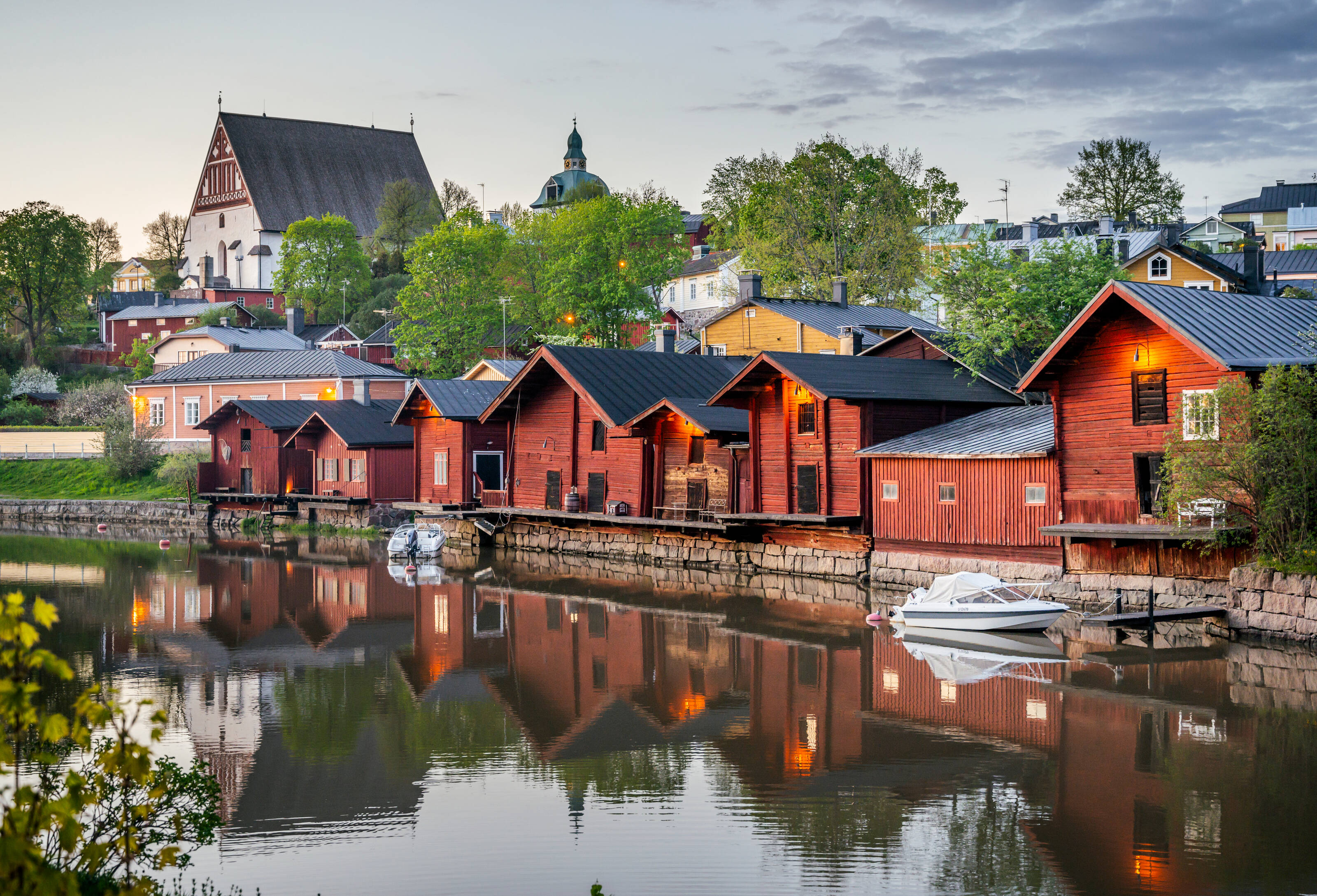Arriving at Fiskars is like stepping into another world, one where art, design and craft blossom from historic riverside buildings surrounded by grand ancient trees. The village, first developed as an ironworks in the mid-1600s, now has today a thriving community of craftspeople, entrepreneurs and artists who live in harmony with nature.
The Fiskars river can act as a tour guide by following its flow through the middle of the village. Along this trail you’ll pass Onoma, a showroom of the local talents. Woodwork, pottery, handbags, candles, jewellery – there’s a lot of handwork going on in the village. Be sure to check out KWUM, a ceramics museum and gallery, located in an architecturally outstanding and intimate building that combines wood, timber, and ceramics. If the history of the village and ironworks interests you, visit The Fiskars Museum.
When it is time for a drink, head to the Tap Room. This is the shared bar of local brewery Fiskarsin Panimo, famous for its rye juniper beer and spruce shoot ale, and The Ägras Distillery, which makes spirits from wild Finnish herbs. As the name suggests, the bar is located next to their production facilities. For soft drinks, coffee or tea, together with a slab of the cake of the day, head to Café Antique.
Fiskars is a popular mountain biking spot too; more than 60 kilometres of trails wind through the forests around the village. You can rent bikes at The Fiskars Village Trail Center, check out Visit Raseborg’s city bike rentals.To spend the weekend, check out The Torby Hotel, located next to the idyllic water stream.
You can reach Fiskars by a 55-minute train ride from Helsinki Central Railway Station to Karjaa. From there it’s 20 minutes by bus or car into the village. If you drive or rent an electric car, like a GoMore, there are two charging points in Fiskars.
